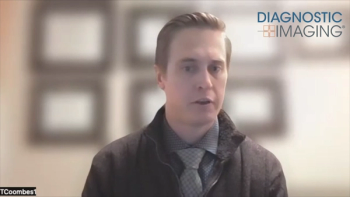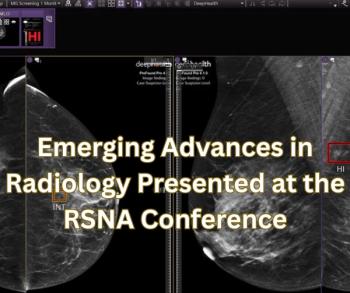Emerging research suggests that a deep learning model may offer mixed results in the assessment of low-dose computed tomography (LDCT) for predicting lung cancer risk at one and six years.
For the retrospective study, recently published in Radiology, researchers evaluated the use of the open-source deep learning model Sybil for predicting lung cancer risk through assessment of LDCT scans for 18.057 individuals (median age of 56). The cohort included 2,848 people with a history of heavy smoking and 9,943 individuals with light or no smoking history, according to the study.
Overall, the study authors found that the deep learning model offered a 91 percent AUC for predicting one-year lung cancer risk and a 74 percent AUC for predicting lung cancer within a six-year period.
“Sybil exhibited robust predictive performance for lung cancers,” wrote lead study author Jong Hyuk Lee, M.D., Ph.D., who is affiliated with the Department of Radiology at the Seoul National University Hospital in Seoul, Korea, and colleagues.
For individuals with histories of heavy smoking, the researchers noted a 94 percent AUC for the deep learning model in detecting visible lung cancers and a 70 percent AUC for predicting future lung cancer within six years. However, the study authors pointed out challenges with the ability of the deep learning-generated attention maps to localize tumor sites for predicted cancer.
“This discrepancy between risk score–based performance and spatial localization underscores a limitation of attention-based explanations, particularly for cancers not yet visible at imaging,” posited Lee and colleagues.
Three Key Takeaways
- High short-term predictive accuracy. The deep learning model Sybil demonstrated strong performance in predicting one-year lung cancer risk from LDCT scans, with an AUC of 91 percent overall and 94 percent in heavy smokers.
- Weaker long-term prediction and localization. While Sybil showed moderate six-year predictive ability (AUC 74 percent overall, 70 percent in heavy smokers), it struggled with spatial localization of tumors, particularly for cancers not yet visible on imaging.
- Limited efficacy in low-risk populations. The model performed significantly worse in individuals with light or no smoking history, with only a 56 percent AUC for six-year prediction. This may be due to underrepresentation in training data and differences in tumor biology (e.g., subsolid nodules, EGFR-mutated adenocarcinomas), according to the study authors.
For individuals with no or light smoking history, the deep learning model provided an 89 percent AUC for detection of visible lung cancers but offered only a 56 percent AUC for predicting future lung cancer.
“It is plausible that Sybil, trained on data from individuals with heavy smoking histories, did not sufficiently capture the distinct biologic characteristics and subtle imaging features relevant to lung carcinogenesis in those who never smoked or smoked lightly, in whom lung cancers more frequently manifest as subsolid nodules, often corresponding to epidermal growth factor receptor–mutated adenocarcinomas,” suggested Lee and colleagues.
(Editor’s note: For related content, see “Can CT-Based Deep Learning Bolster Prognostic Assessments of Ground-Glass Nodules?,” “Can AI Predict Future Lung Cancer Risk from a Single CT Scan?” and “Can Radiomics Bolster Low-Dose CT Prognostic Assessment for High-Risk Lung Adenocarcinoma?”)
Beyond the inherent limitations of a single-center retrospective study, the authors acknowledged that the findings from the Asian cohort may have limited applications to a broader patient population. The researchers also noted the absence of standardized follow-up protocols, the small number of lung cancers and the artificially elevated cancer prevalence in the case control subset utilized to compare the deep learning model and Lung-RADS assessment.





























